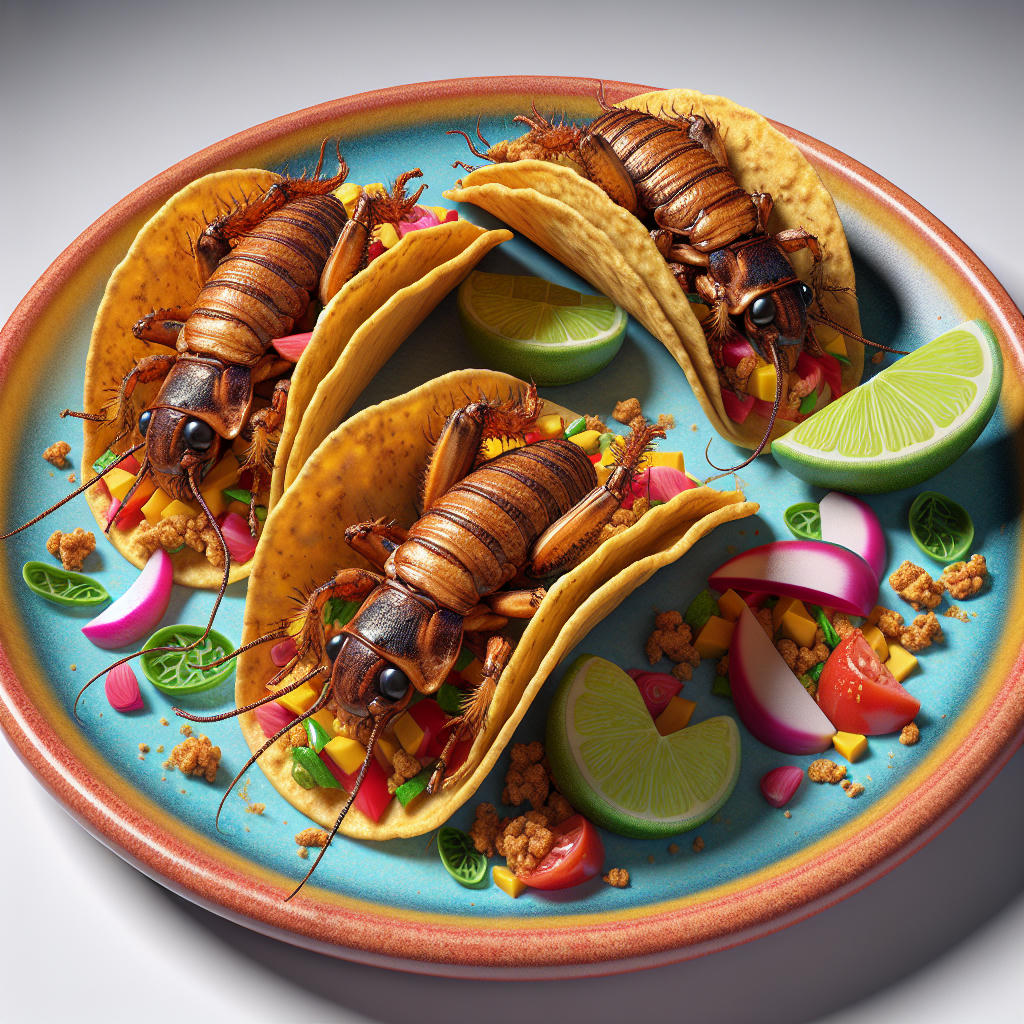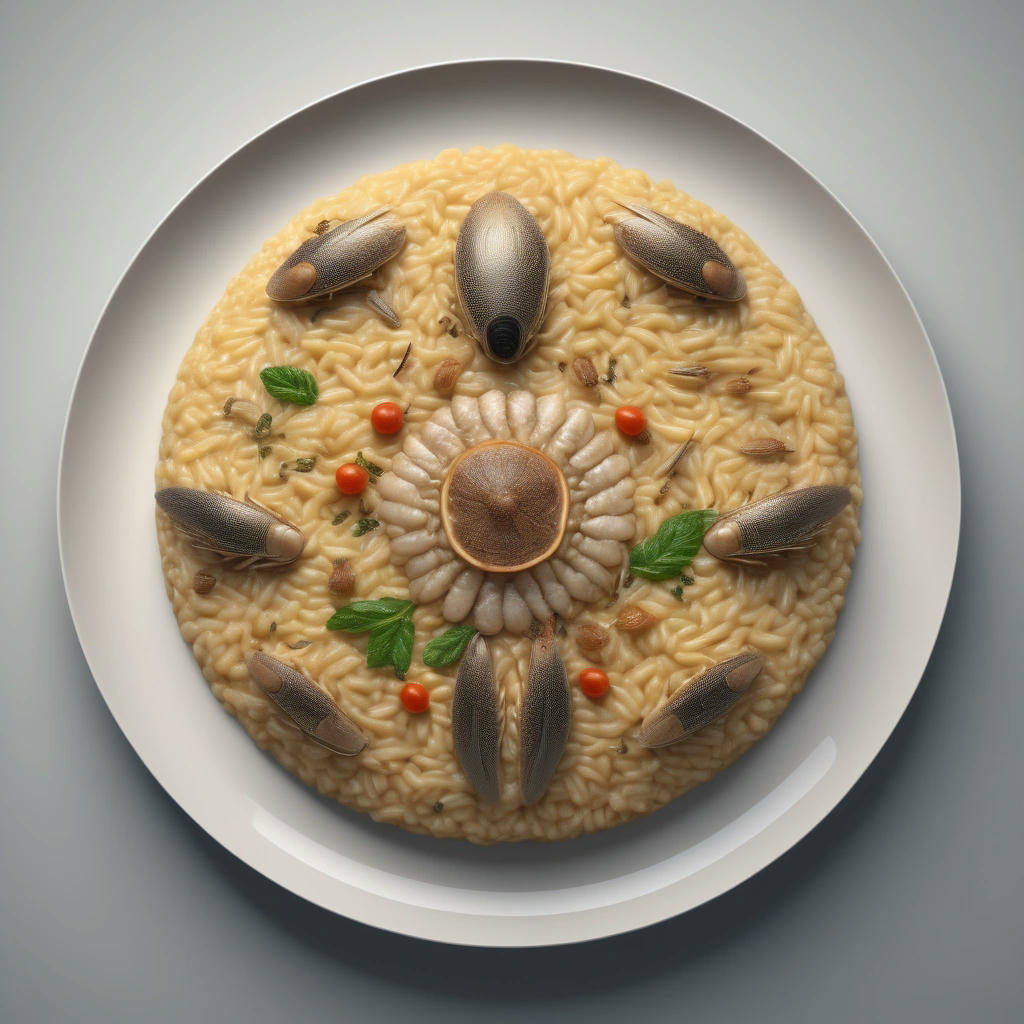In the heart of the bustling city, where the cacophony of honking cars and the aroma of street food meld into a sensory overload, I embarked on a culinary journey that would forever change my perception of food. It was a journey that led me to embrace an unexpected and often misunderstood source of nutrition: insects.
The Initial Hesitation
My first encounter with the idea of eating insects was met with a mixture of curiosity and revulsion. Growing up in a culture where insects were considered pests rather than food, the thought of consuming them seemed alien and unappetizing. However, as I delved deeper into the world of entomophagy—the practice of eating insects—I began to uncover a rich tapestry of history, culture, and sustainability that piqued my interest.
A Historical Perspective
Insects have been a part of human diets for centuries, with evidence of entomophagy dating back to ancient civilizations. Indigenous communities across the globe have long recognized the nutritional value of insects, incorporating them into their diets as a sustainable and readily available source of protein. From the crispy chapulines of Mexico to the savory mopane worms of Southern Africa, insects have played a significant role in traditional cuisines.
As I learned more about these culinary traditions, I began to appreciate the ingenuity and resourcefulness of these cultures. Insects are not only rich in protein but also contain essential vitamins and minerals, making them a valuable addition to any diet. This newfound knowledge sparked a desire to explore the world of edible insects firsthand.
The First Bite
My journey into entomophagy began at a local food festival, where a vendor was offering a variety of insect-based dishes. The sight of crickets, mealworms, and grasshoppers neatly arranged on platters was both intriguing and intimidating. With a mixture of trepidation and excitement, I decided to take the plunge and try my first insect dish: cricket tacos.
The experience was surprisingly pleasant. The crickets were seasoned with a blend of spices that masked any unfamiliar flavors, and their texture was reminiscent of crispy, roasted nuts. As I savored each bite, I realized that my initial aversion was more psychological than anything else. The crickets were not only palatable but also delicious.
A Sustainable Choice
One of the most compelling reasons to embrace entomophagy is its potential to address global food security and environmental sustainability. Insects require significantly fewer resources to raise compared to traditional livestock. They produce fewer greenhouse gases, consume less water, and can be farmed on organic waste, making them an eco-friendly alternative to conventional protein sources.
As the global population continues to grow, the demand for sustainable food sources becomes increasingly urgent. Insects offer a viable solution to this challenge, providing a nutrient-dense food source that can be produced with minimal environmental impact. By incorporating insects into our diets, we can reduce our ecological footprint and contribute to a more sustainable future.
Culinary Creativity
Embracing entomophagy also opens up a world of culinary creativity. Insects can be incorporated into a wide range of dishes, from savory snacks to gourmet meals. Chefs and food enthusiasts around the world are experimenting with insect-based ingredients, creating innovative and delicious recipes that challenge conventional notions of food.
One memorable dish I encountered was a mealworm risotto, where the mealworms added a delightful crunch and nutty flavor to the creamy rice. Another standout was a chocolate-covered ant dessert, where the ants provided a surprising burst of tangy flavor that complemented the rich chocolate. These experiences demonstrated that insects could be more than just a novelty—they could be a versatile and valuable ingredient in modern cuisine.
Overcoming Stigma
Despite the many benefits of entomophagy, there remains a significant cultural stigma associated with eating insects. Overcoming this stigma requires a shift in perspective and a willingness to challenge preconceived notions about food. Education and awareness play a crucial role in this process, as people are more likely to embrace new foods when they understand their nutritional and environmental benefits.
For me, the journey to embracing entomophagy was as much about personal growth as it was about culinary exploration. It required me to confront my own biases and step outside of my comfort zone. In doing so, I discovered a world of flavors and textures that I had never imagined, and I gained a deeper appreciation for the diverse ways in which cultures around the world nourish themselves.
The Future of Food
As we look to the future, it is clear that our food systems must evolve to meet the challenges of a growing population and a changing climate. Insects offer a promising solution, providing a sustainable and nutritious food source that can help address these challenges. By embracing entomophagy, we can diversify our diets, reduce our environmental impact, and contribute to a more resilient and sustainable food system.
In conclusion, my journey into the world of edible insects has been a transformative experience. It has challenged my perceptions, expanded my culinary horizons, and deepened my understanding of the interconnectedness of food, culture, and sustainability. While the idea of eating insects may still be met with hesitation by many, I encourage everyone to approach it with an open mind and a sense of adventure. You might just find, as I did, that there is much to love about eating ze bugs.


